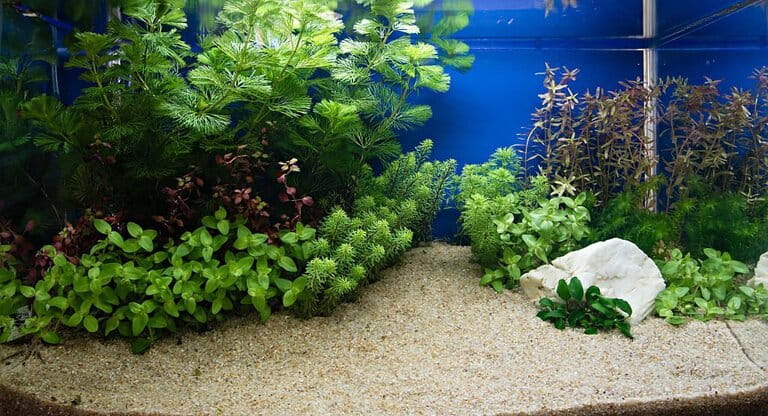Setting up a freshwater aquarium can be a rewarding and enjoyable experience for both beginners and seasoned aquarists alike. However, it requires careful planning, attention to detail, and patience to create a thriving aquatic environment for your fish and other aquatic inhabitants. In this article, we will provide you with a comprehensive, step-by-step guide on how to set up a freshwater aquarium successfully. By the end of this guide, you'll be equipped with the knowledge and confidence to create a beautiful and healthy aquatic habitat for your underwater friends.
The Challenges of Setting up a Freshwater Aquarium
Lack of Knowledge: For beginners, the world of aquarium keeping may seem overwhelming with a plethora of information and technical terms to grasp. A lack of knowledge can lead to poor decisions and mistakes that might compromise the health of your aquarium inhabitants.
Water Quality Concerns: Maintaining proper water quality is vital for the well-being of your aquatic creatures. Understanding the nitrogen cycle, pH levels, and other water parameters can be challenging for those new to the hobby.
Choosing Compatible Fish and Plants: Selecting fish and plants that are compatible with each other can be a daunting task. Some species may have specific requirements and behaviors that need to be considered to prevent conflicts.

The Importance of Proper Aquarium Setup
Setting up your freshwater aquarium correctly lays the foundation for a healthy and sustainable aquatic environment. A well-planned setup ensures that your fish and plants thrive, reduces stress on the inhabitants, and minimizes the risk of common aquarium problems such as algae outbreaks and diseases. Properly setting up your aquarium will save you time, effort, and money in the long run.
Step-by-Step Guide to Setting up Your Freshwater Aquarium
Now, let's dive into the step-by-step process of setting up a freshwater aquarium:
Step 1: Research and Planning
Before purchasing any equipment or fish, conduct thorough research on the type of freshwater aquarium you want to create. Consider factors such as tank size, fish species, plants, and aquarium equipment. Determine whether you want a community tank with various fish species or a specialized setup focused on specific types of fish and plants.

Step 2: Choose the Right Tank Size
Select an appropriately sized aquarium that suits your available space and budget. Keep in mind that larger tanks are generally more stable and forgiving in terms of water parameters. A 20-gallon tank or larger is recommended for beginners as it provides more room for stable water conditions.
Step 3: Select Essential Equipment
Gather the necessary equipment, including:
- Filtration System: Choose a high-quality filter suitable for your tank size. Filters help remove waste and toxins, ensuring a clean and healthy environment.
- Heater: For tropical fish, invest in a reliable heater to maintain the right water temperature.
- Lighting: Select appropriate lighting for your tank, especially if you plan to have live plants.
- Substrate: Choose a suitable substrate for your aquarium, such as gravel or sand, based on your fish and plant preferences.
- Decorations: Add decorations like rocks, driftwood, and artificial plants to create a natural-looking environment and provide hiding spots for your fish.

Step 4: Set Up the Aquarium
Thoroughly clean the tank and all equipment with warm water to remove any dust or debris. Place the tank on a level, sturdy surface away from direct sunlight and drafts. Install the filtration system, heater, and lighting according to the manufacturer's instructions.
Step 5: Add Substrate and Decorations
Carefully add the substrate to the aquarium, ensuring it's evenly spread and level. Gently place the decorations, rocks, and driftwood, creating a pleasing layout while leaving enough open space for swimming.
Step 6: Fill the Tank with Water
Fill the aquarium with water using a dechlorinator to neutralize harmful chemicals in tap water. Slowly add water to prevent disturbing the substrate and decorations.

Step 7: Cycle the Aquarium
The nitrogen cycle is crucial for establishing a healthy aquarium. It involves beneficial bacteria converting toxic ammonia from fish waste into less harmful nitrites and finally into nitrates. To cycle your aquarium:
- Add Ammonia Source: Introduce an ammonia source, such as fish food or pure ammonia, to kickstart the nitrogen cycle.
- Monitor Parameters: Use a water testing kit to monitor ammonia, nitrite, and nitrate levels. The cycle typically takes 4-6 weeks to complete.
- Introduce Fish Gradually: Only add fish once the ammonia and nitrite levels are zero and nitrates are present. Start with a few hardy fish species and gradually add more over time.

Step 8: Choose and Introduce Fish and Plants
Select fish and plants that are compatible with each other in terms of water parameters, size, and temperament. Introduce the fish gradually to prevent stress and overcrowding.
Step 9: Establish a Feeding Routine
Develop a feeding routine and provide a balanced diet for your fish. Overfeeding can lead to water quality issues, so only give them the amount of food they can consume within a few minutes.
Step 10: Perform Regular Maintenance
To maintain a healthy aquarium, perform routine maintenance tasks, including:
- Water Changes: Regularly change 10-25% of the water every 1-2 weeks to remove nitrates and replenish essential minerals.
- Filter Cleaning: Clean the filter media every 2-4 weeks to maintain optimal filtration efficiency.
- Pruning and Trimming: Trim and prune plants as needed to maintain their health and prevent overgrowth.
- Monitor Water Parameters: Regularly test the water to ensure proper pH, ammonia, nitrite, and nitrate levels.

Conclusion
Creating and maintaining a freshwater aquarium can be a fulfilling and enjoyable hobby. By following this step-by-step guide, you can set up a thriving aquatic environment for your fish and plants. Remember to research, plan, and choose suitable equipment, fish, and plants to ensure a successful and sustainable aquarium. With proper care and attention, your freshwater aquarium will provide you with a captivating glimpse into the fascinating underwater world of aquatic life.













